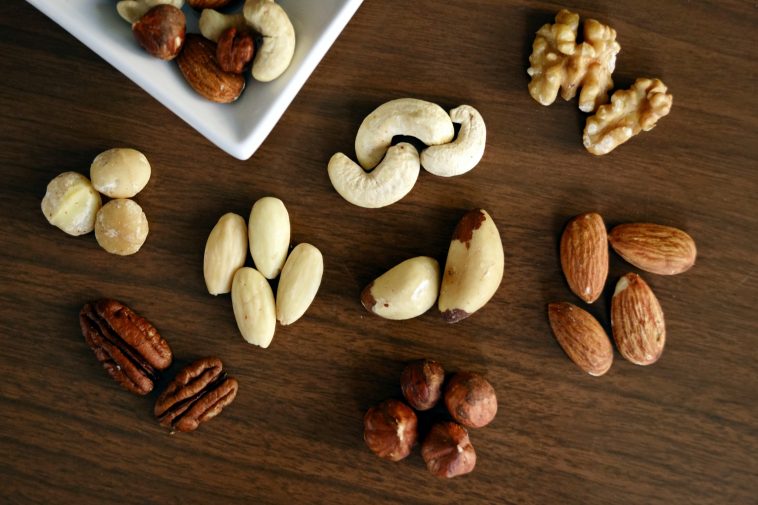According to the McKinsey and Company report, Winning in Africa’s agricultural market, more than 60% of the population of sub-Saharan Africa are smallholder farmers, and about 23% of sub-Saharan Africa’s DP comes from agriculture.
These farmers participate in a variety of agricultural systems, from horticulture to livestock production.
When it comes to tree nuts, the majority of these farmers face a myriad of challenges such as the high costs involved in setting up plantations, maintenance, and the long waiting period between planting and harvesting. Tree nut production systems are more common among farmers with large amounts of capital to inject into production.
Nuts generally have a high oil content and are a significant energy source. Most of the harvested nuts are utilised for culinary, cosmetic and medicinal purposes. They can also be ground to make nut butters or pressed to produce oil. In the culinary sector, they are used in baked goods, candy, ice cream, frozen desserts, puddings, and hot chocolate, cereals, trail mix, soups, and grain breads.

Almond nut in shell. (Source: John Riches via pexels)
In the cosmetic sector, their essential fats and protein content are desirable because it promotes smooth, supple and glowing skin, and improves hair.
Their richness in antioxidants, vitamins and other components make them sought for in the pharmaceutical industry.
The tree nuts produced globally are almonds, cashew, chestnut, hazelnuts, pecan nuts, pistachios, walnuts, macadamias, pine nuts and Brazil nuts.

Cashew nuts growing on the cashew apple of a tree. (Source: Pixabay)
Outside Africa, tree nut producing countries are the United States of America, United Arab Emirates, Australia, Spain, Saudi Arabia, Iran, Tunisia, Iran, Bolivia, Peru, India, Vietnam, Cambodia, Indonesia, Italy, Azerbaijan, Chile, Korea DPR, Pakistan, Greece, Syria, France and Argentina.
In Africa producers are South Africa, Malawi, Nigeria, Senegal, Kenya, Tunisia, Egypt, Libya, Morocco, Algeria, Côte d’Ivoire, Burkina Faso, Benin and Zimbabwe.
According to a 2022 Statista report during the 2020/2021 period, over 5,3 million metric tonnes of tree nuts were produced worldwide. Within the tree nut category, the almond production volume (kernel basis) was by far the highest in the 2020/2021 period: over 1,6 million tonnes of almonds were produced that year. Walnuts and cashews, which stood in second and third place respectively within the same measured period, each reached over one million tonnes.

Raw chestnuts in their shell. (Source: Pixabay)
Global production figures for the 2021/2022 period are: almonds, 1 643 thousand tonnes; walnuts, 996,08 thousand tonnes; pistachios, 795,3 thousand tonnes; cashews, 894,29 thousand tonnes; hazelnuts, 545,15 thousand tonnes; pecans, 129,51 thousand tonnes; macadamias, 66,44 thousand tonnes; pine nuts, 40,01 and Brazil nuts 24 thousand tonnes.
Almonds
Almond tree nuts grow well in climates with slightly hot summers with temperatures ranging from 30 to 35 °C, and cool winters that promote plant growth and kernel filling. Their unopened blossoms can resist temperatures as low as -2,2 °C, but blossoms at petal fall stage are damaged at 0,5 °C to -1,1 °C. Nut tree plantation densities are 270 trees per hectare depending on the varieties grown. This gives an average yield of 2,04 tonnes per hectare. Planting to harvesting takes 2 to 4 years. They are grown in Libya, Morocco, Algeria, Côte d’Ivoire, Burkina Faso, Benin, and South Africa.

Raw, harvested almonds. (Source: Pixabay)
Almonds are used in candies, baked goods, and confections, as well as for the oil processed from the nut. The fruits from almond trees are also reputed to relieve a number of physical ailments as they control blood sugar, assist with blood pressure levels and lower cholesterol levels.
Cashews
Cashew trees do well in a warm, humid climate characterised by a minimum of 600 mm of rainfall. They require temperatures from 15 to 40OC. Trees do not perform well in regions that experience frost and cold waves. They are drought resistant. The plantation density for cashews is 100 trees per hectare producing 0,25 tonnes of nuts per hectare, in contrast to over a tonne per hectare for the dwarf variety. They are mostly produced in Côte d’Ivoire. Other main producers are Tanzania, Nigeria, Benin, Guinea-Bissau, South Africa, Mozambique and Ghana.

Raw, harvested cashew nuts. (Source: Pixabay)
The cashew apple – as the fruit is called – can be juiced and turned into wine, and the wine distilled for brandy. The sap from their trunks has insecticidal properties. The poisonous cashew nutshell liquid is used to make a variety of products such as epoxies, ship varnishes and friction dust for car brake linings, to mention only a few.
Chestnuts
Chestnuts produce best in areas that have hot, humid summers. There is great genetic variation in climatic tolerance, especially cold hardiness. Trees chosen should be fit for the area in which they are intended to be grown. Tree plantation average 60 trees per hectare to produce about 6,7 tonnes per hectare. It takes two to three years from planting to harvest time. In sub-Saharan Africa they are produced in Zimbabwe and Cameroon.

Chestnuts are usually roasted. (Source: Mikhail Nilov via pexels)
They are used in the culinary industry, and their medicinal properties aid in heart health, improve blood sugar control, aid in weight loss, lower inflammation and possess anti-tumour properties.
The potential for the increased production of more nuts in sub-Saharan Africa remains plausible. Variety and species from more investment in research and development would aid this process, together with training and assistance from the private and public sector.









